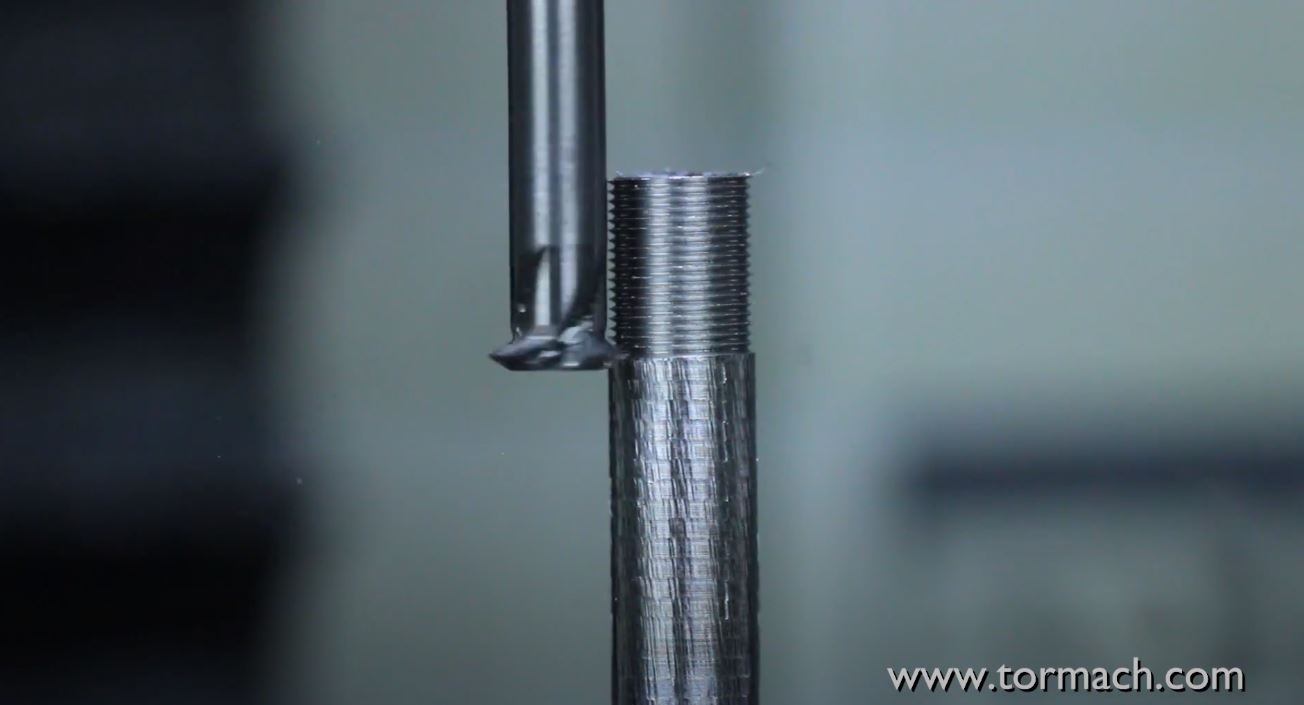Tapping parts by hand can be a pain. It can be slow, tedious, and lead to crooked threads if you are not careful. For many hobbyists, tapping on a CNC machine is not an option, with taps requiring too much spindle power for hobby level machines and/or an encoder to synchronize the spindle rotation to the thread pitch.
Currently only Tormach’s -MX line offers the ability to rigid tap on-machine, but fear not - for owners with PCNC or -M model mills there is another option: threadmilling.
What is threadmilling?
Threadmilling involves using a specialized tool, the threadmill, to machine the profile of the thread. Instead of plunging the tool into the part in a straight line like with a tap, a threadmill interpolates around the hole while moving down at the pitch of the desired thread. Thread mills can either have a single-point profile, allowing for a variety of thread sizes and pitches to be machined with one tool, or have multiple teeth along the cutting length for a specified thread series to be cut in fewer passes.
Why threadmill?
Threadmilling offers a few benefits over tapping:
- Tolerances of holes can be adjusted for the desired fit
- Material can be cut in progressive passes (better for hard materials)
- Unlike a tap, threadmills won’t get stuck in a part if they break
- One single-point tool can handle many thread sizes and pitches
- Odd sized or custom threads can be machined easily
- Threadmilling requires significantly less horsepower from the machine than tapping
- Threadmills are readily available in carbide, as opposed to most taps being HSS or powdered metal
- You can cut external threads instead of using a thread die by hand
- You can use a threadmill as a back chamfer tool
- Although normally expensive, Tormach sells very reasonable priced threadmills
How to threadmill?
With the help of the Machinery’s Handbook, we created a calculator that makes threadmilling easy. Just plug in the info you need to get the Pitch Diameter Offset which tells you how far into the walls of the hole you need to cut. The days of threadmilling the same hole time and time again to get the right fit are over!
Also be sure to check out our video on Micro Threadmilling, where we push the Tormach 1100M and our threadmill calculator to their limits with tiny tooling, screws, and threads.
Still looking for more? Head over to our NYC CNC page on threadmilling for additional tips, tricks, videos, and resources or check out ProvenCut for verified threadmilling recipes.
This blog was guest written by John Saunders of NYC CNC and Saunders Machine Works.


